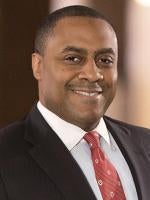With stunning speed, the balance of power between collegiate athletes and the institutions they play for has changed. Recent events at the University of Missouri may feel like a tectonic shift but the preceding tremors had been evident for some time. In this new normal of student-athlete coordinated action, universities will need to be prepared to swiftly address legal, operational, health and welfare, and fiscal concerns which affect student-athletes.
Two years ago (and in a sign of things to come), a group of football players at a Southwestern Athletic Conference (SWAC) institution decided they reached their breaking point. Despite a series of complaints to their university administration, the underlying feeling was concerns were not being addressed. In this instance, the institution was Grambling State University and the football team was upset with what they viewed as unhealthy training conditions, substandard facilities and poor travel arrangements which exhausted the team before games. The players also were unhappy about the termination of then-head football coach Doug Williams and the failure to address his transition with the team.
What followed would have previously been unthinkable – the team boycotted their game with Jackson State University. While Jackson State was unhappy and considered legal relief (the cancelled game occurred during Jackson State’s homecoming weekend), the potentially larger financial impact was whether a prolonged boycott would adversely affect the “Bayou Classic”. This well-attended game between Grambling State and Southern University each Thanksgiving weekend at the Louisiana Superdome carried an annual economic impact of about $50 million to the New Orleans area.
Fortunately, the Grambling State boycott ended with a cost of only one lost game. However, a playbook had been created for student-athletes to seek redress of grievances. Since the Grambling State boycott, an attempt was made to organize Northwestern University’s scholarship football players as a collective bargaining unit. More recently, and at the same time events were reaching an apex in Columbia, Missouri, the University of Illinois dismissed its athletic director amid allegations by its football and women’s basketball coaches that players were pressured to play hurt and of improper interference with medical decisions.
To be clear, NCAA Division I membership institutions hold a financial weapon against student-athletes in their arsenal as NCAA Bylaws 15.3.4.2 and 15.3.5.1 allow schools to cancel an athletic grant-in aid for a player who withdraws from a sport at any time for personal reasons. Such an action however comes with potential backlash when the cause of withdrawal from athletics competition is a social justice issue, as was presented by the University of Missouri football team.
Preparation for the new world of collective action requires keen attention to athletic compliance audits with legal counsel covering all areas with touch points to athletics – health and welfare, human resources, legal affairs, financial aid, facilities management, and academic affairs serving as a starting point. Establishing meaningful coordination between the athletics department and these other critical university functions is vital for timely recognition and crisis response to concerns that are the focus of student activism. Beyond taking proactive measures to configure the organization to be less vulnerable to disastrous missteps, the deft coordination of crisis management when controversy hits is essential. This requires understanding of the legal options available to the university and briefing points with those involved on the front lines of athletics (such as coaches, compliance officers and athletic directors) and others who may be involved depending on the nature of the issue, such as student affairs.
It would be a mistake to view the actions of the University of Missouri’s football team as unique timing related to a highly controversial incident that occurred less than two hours away in Ferguson, Missouri. The age of collective action in athletics has arrived as much as YouTube, and denial of its existence will only make crisis management more difficult. An ounce of prevention through a comprehensive athletics compliance audit with independent counsel is an advisable first step.




 />i
/>i

